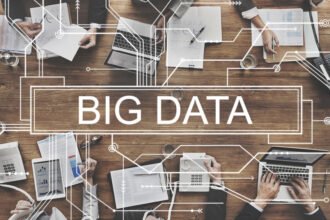
The driving force behind enterprise data analytics today is obtaining valuable insights more quickly from large, diverse data sets. A key issue blocking easier access for data scientists, business analysts and IT has been finding an alternative to the current data modeling process.

The driving force behind enterprise data analytics today is obtaining valuable insights more quickly from large, diverse data sets. A key issue blocking easier access for data scientists, business analysts and IT has been finding an alternative to the current data modeling process.
The current options don’t work all that well — the data warehouse and conventional data lake, as well Hadoop-based point solutions, all have their challenges. The truth is, data modeling is most easily configured, structured and analyzed within the context of a smart data lake.
With a smart data lake, you can create a single, semantic-based data model or enterprise knowledge graph for the entire organization. This approach to data modeling essentially cuts out “the middle man,” and enables users to begin conducting analysis almost immediately. Leveraging smart data lakes also allows information to be moved in and out of a data depository at will, as well as makes it shareable and accessible across the organization.
There are other benefits as well. Because smart data lakes leverage a semantic-based data model, the “meaning” of data with all the inherent, relationships and attributes can be easily captured and delivered. Previously, organizations have been limited in their ability to take analytics further and make deeper connections and more impactful insights due to the current way data models are constructed. Users received a very narrow view of pre-configured data that, inevitably, raised more questions and hypotheses than the information they are working from could answer. With a flexible semantic-based model, users can query data almost on demand, allowing them to open up a range of questions and information that they want to query and take action on.
Data modeling within smart data lakes enhances its effectiveness, enabling users to examine the entire corpus of data that has been transformed, integrated and made available by an in-memory database with a robust graphic analytics engine. Semantic data models also describe the data in your environment to give you better visibility into things like data provenance, creating an unbeatable combination of data management and analytics within a single application.
Semantic-based data modeling also allows businesspeople use the terms they use in their daily jobs. Business analysts can automatically generate data extractions and transformations without the need for a programmer or a programming environment, providing an unprecedented level of self-sufficiency while reducing costs and time to value.
With semantic-based data modeling in a smart data lake, all your data can be neatly organized using business models that the user defines, based on human-readable, standardized terms that allow you to link and contextualize information regardless of where it came from. And all this smart data can then be used to automatically create data extracts, ETL, and ELT jobs for quick and efficient analysis.
Because the data model has been created with a semantic approach, that model can be queried endlessly. Analysts can ask the model where data came from, what it means, and what conservation happened to that data. Bringing the data together from various sources, combining it together in a database using a customized domain model, and then conducting analytics on that combined data set creates a huge benefit and freedom to analysts, and to the organization.
It all starts with the data and what you want to do with it, which drives strategies, decisions and everything else. The goal is getting people from the raw data to the most impactful decision-making as quickly as possible.









